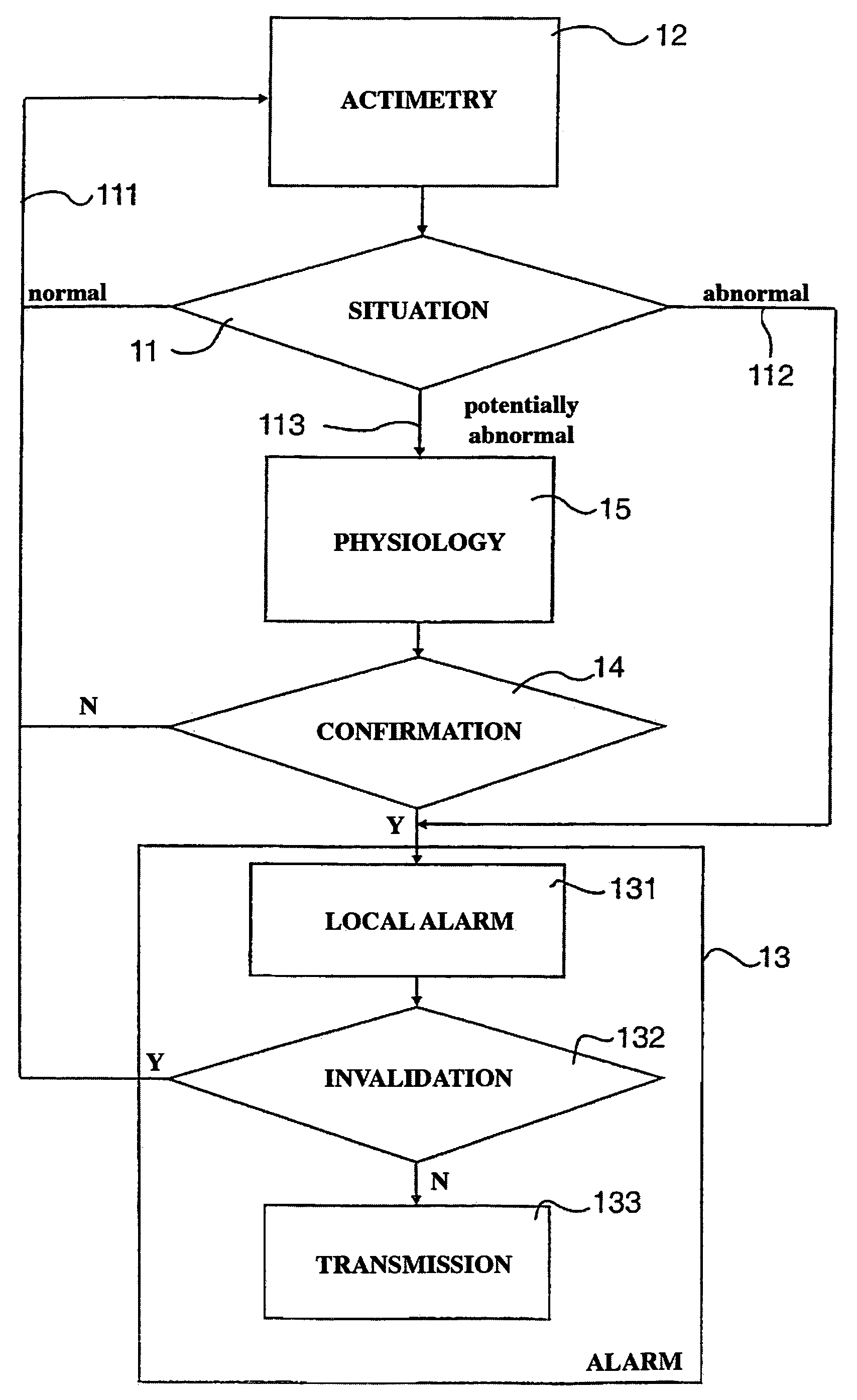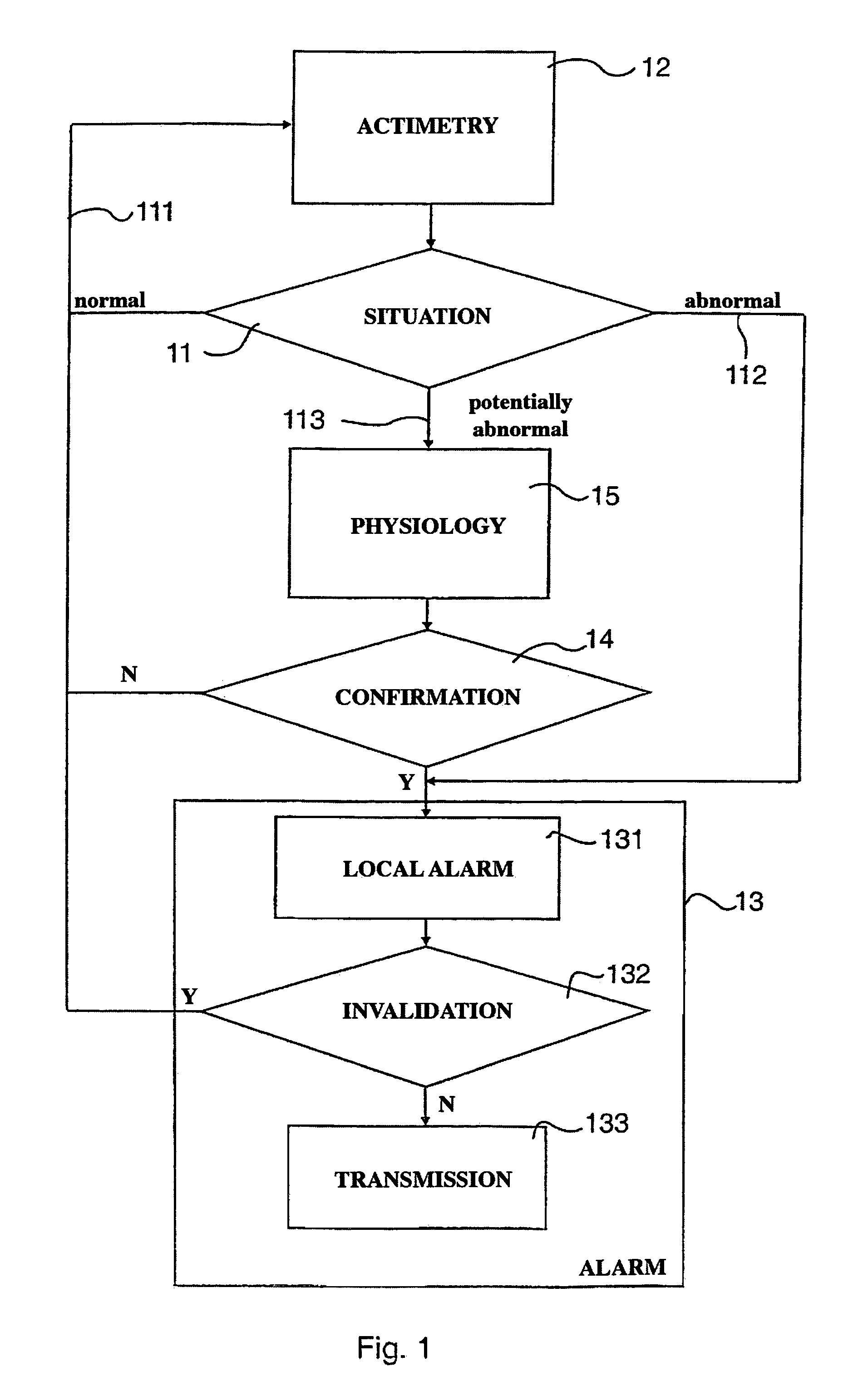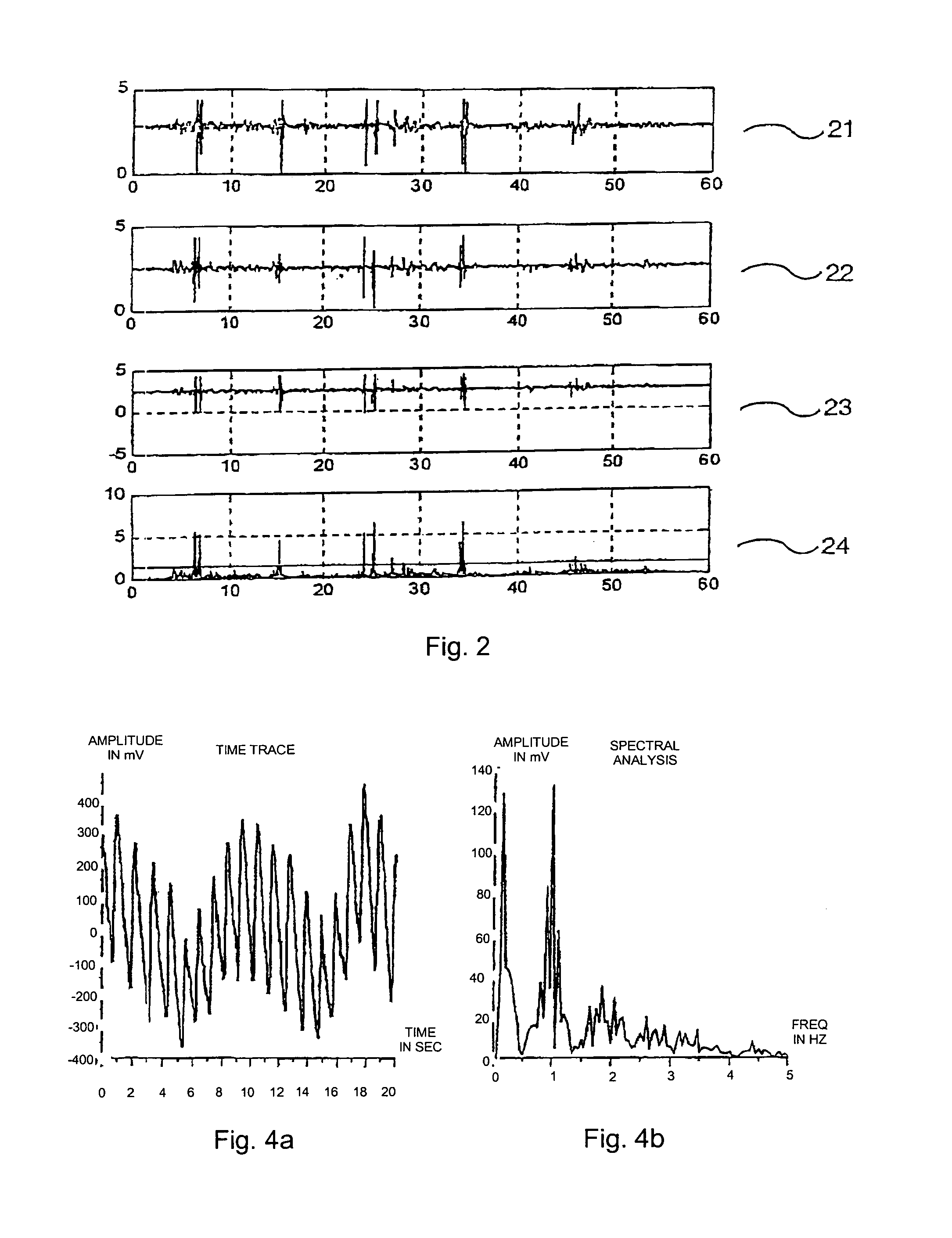Device and method for detecting abnormal situations
a technology for abnormal situations and devices, applied in diagnostics, medical science, instruments, etc., can solve the problems of false alarms, consuming a significant amount of energy, and never knowing whether they are being worn or no
- Summary
- Abstract
- Description
- Claims
- Application Information
AI Technical Summary
Benefits of technology
Problems solved by technology
Method used
Image
Examples
Embodiment Construction
[0079]The aim of the invention is thus a device for detecting abnormal situations in a subject, falls in particular. This device and the corresponding method are more reliable and more precise that systems known in prior art, in particular because they combine, at least when necessary, actimetric and physiological information, as shown by the general block diagram of FIG. 1.
[0080]The analysis of the actimetric situation of the patient, in function of the actimetric information 12 can be of three types:[0081]normal 111: then only the actimetric sensors function;[0082]evidently abnormal 112: in this case one passes directly to stage 13 for generating an alarm;[0083]potentially abnormal 113: this is the usual case where a significant movement has been detected, without being certain whether it involves a fall (this case is more frequent when the movement detection thresholds are low, so as to be able to detect “micro-falls”).
[0084]In the latter situation 113, a supplementary stage 14 i...
PUM
 Login to View More
Login to View More Abstract
Description
Claims
Application Information
 Login to View More
Login to View More - R&D
- Intellectual Property
- Life Sciences
- Materials
- Tech Scout
- Unparalleled Data Quality
- Higher Quality Content
- 60% Fewer Hallucinations
Browse by: Latest US Patents, China's latest patents, Technical Efficacy Thesaurus, Application Domain, Technology Topic, Popular Technical Reports.
© 2025 PatSnap. All rights reserved.Legal|Privacy policy|Modern Slavery Act Transparency Statement|Sitemap|About US| Contact US: help@patsnap.com



